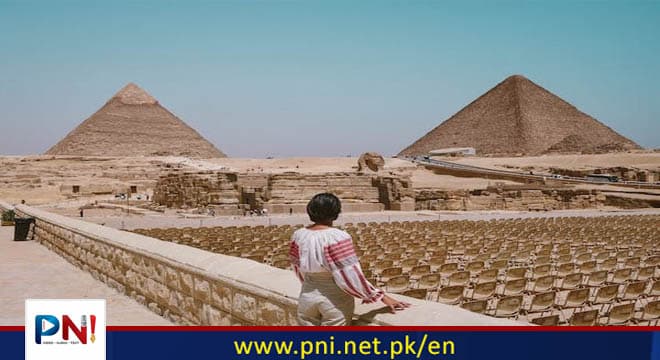The Archaeological Expedition
Deep in the scorching desert sands of Egypt, a team of archaeologists led by Dr. Amelia Carter embarked on an ambitious expedition to uncover the hidden secrets of the ancient Valley of the Kings. Their primary focus was the tomb of Pharaoh Ramses III, rumored to be filled with unimaginable treasures and guarded by a curse that had befallen those who dared to disturb its slumber.
As the team began excavating, a sense of excitement and apprehension filled the air. Dr. Carter was an experienced archaeologist, well-versed in Egyptian history and myths, but even she couldn’t help but feel a tinge of unease about the tales of the pharaoh’s curse.
The Unearthed Artifact
Days turned into weeks, and the excavation yielded remarkable discoveries, but nothing compared to the moment when the team unearthed a mysterious artifact – the “Eye of Horus,” an ancient amulet said to possess mystical powers. The Eye of Horus was believed to protect the wearer and provide insight into the unknown. Dr. Carter saw this find as a significant breakthrough, unaware of the ominous shadow it would cast over the expedition.
Strange Occurrences
As they continued their work, peculiar events began to unfold. Unexplained noises echoed through the camp at night, and some members of the team claimed to have seen ghostly apparitions wandering near the tomb’s entrance. Anxiety and tension gripped the expedition, but Dr. Carter remained steadfast, attributing the incidents to fatigue and superstition.
However, when one of the team members fell seriously ill and strange symbols appeared on the walls of their tents, doubt crept into Dr. Carter’s mind. She knew she had to delve deeper into the mysteries surrounding the Eye of Horus and the tomb of Ramses III to understand the source of these eerie occurrences.
Unraveling the Curse
Dr. Carter reached out to an old friend, Dr. Malik Hassan, a local historian deeply knowledgeable about Egyptian curses and legends. With the Eye of Horus in her possession, she sought his expertise in translating the hieroglyphics inscribed on the artifact.
Dr. Hassan was troubled by the discovery of the Eye of Horus. According to the inscriptions, the amulet was created to protect Pharaoh Ramses III from dark forces that had threatened his rule. However, removing the amulet from its resting place was believed to awaken these ancient malevolent entities, unleashing a curse upon those who disturbed its peace.
The Pharaoh’s Message
Intrigued by the mysteries surrounding the artifact, Dr. Carter, Dr. Hassan, and the rest of the team gathered at the tomb’s entrance to decipher more of the hieroglyphics. Hidden within the ancient script was a warning left by Ramses III himself, imploring future generations to leave the Eye of Horus undisturbed.
Realizing the grave danger they were in, Dr. Carter made the difficult decision to return the Eye of Horus to its original position within the tomb. She hoped that by rectifying the disturbance, they could quell the curse and protect the expedition members from further harm.
Confronting the Curse
As the Eye of Horus was placed back in its rightful spot, an eerie silence enveloped the expedition camp. The paranormal occurrences ceased, and a sense of relief washed over the team. It seemed that Ramses III’s plea had worked, but the ancient pharaoh had one more message for them.
Upon closer inspection of the hieroglyphics, Dr. Hassan deciphered that the Eye of Horus carried an important clue about an undiscovered chamber within the tomb. He believed this chamber held the true treasures of Ramses III.
A Treasure Unveiled
Dr. Carter and her team, now more cautious than ever, resumed their excavations with renewed purpose. Following the clues from the Eye of Horus, they uncovered a hidden passageway leading to an untouched chamber. Inside, they discovered a dazzling trove of ancient artifacts, including precious jewels, rare artifacts, and scrolls that offered unparalleled insight into Egypt’s rich history.
The expedition’s success garnered worldwide attention, but Dr. Carter remained humbled by the knowledge that their determination had come with great risks. She had learned to respect the ancient legends and appreciate the warnings left by those who came before.
A Legacy Preserved
Dr. Carter and her team returned to their homes with newfound reverence for the mysteries of Egypt’s past. The Eye of Horus found its place in a prestigious museum, accompanied by a plaque bearing the story of the expedition and the pharaoh’s curse. This tale would continue to be whispered among archaeologists, ensuring that the legacy of Ramses III and his cryptic warning would live on for generations to come.
Follow the PNI Facebook page for the latest news and updates.








